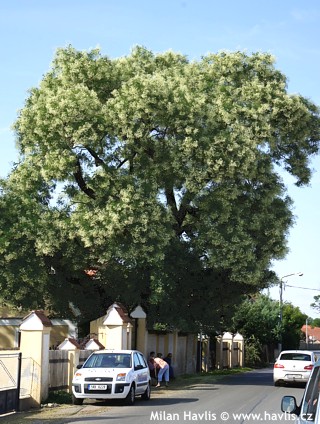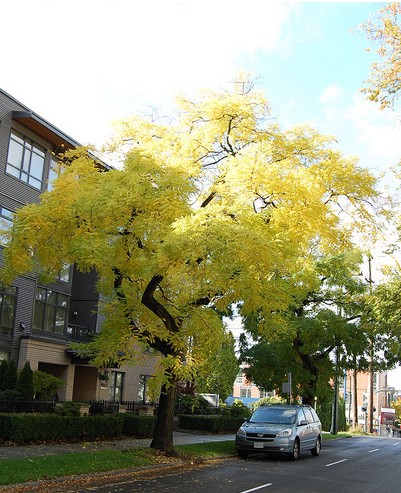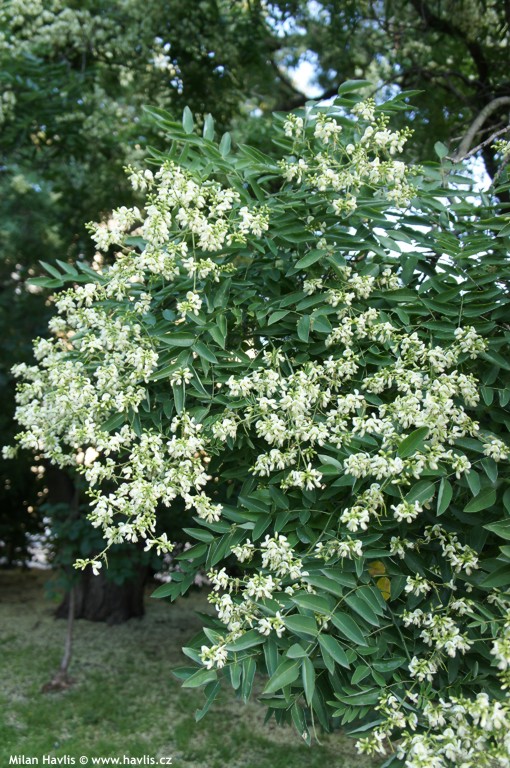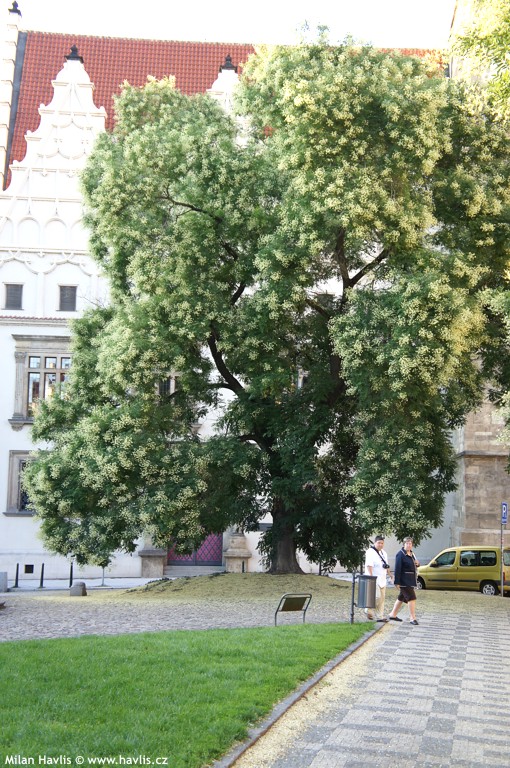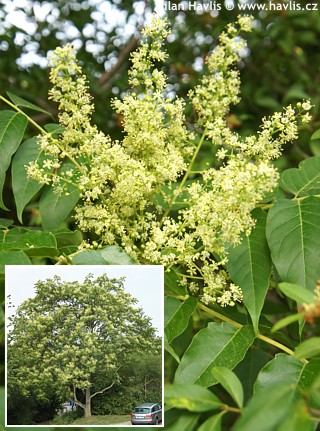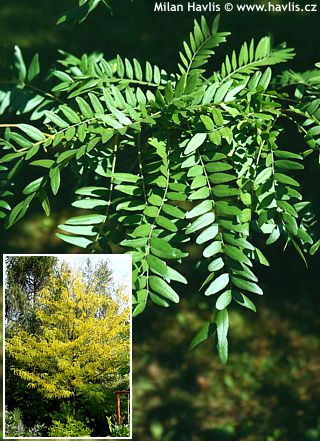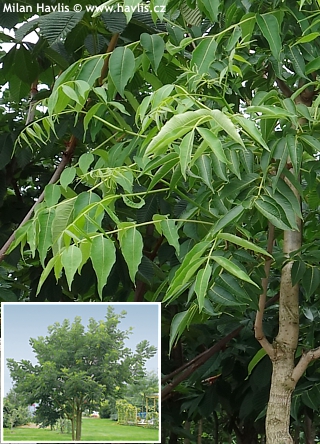Sophora japonica 'REGENT' Japanese pagoda tree
Sophora
If you went looking for a tree typical for every city you would find jacarandas in Buenos Aires, London planes in London, and in Prague you would be struck by the beauty of Japanese pagoda trees. Numerous specimens were planted there many years ago. Now they have skyscraping trunks and huge, irregular crowns, blooming tremendously from midsummer.
Japanese pagoda tree is a beautiful large tree with exotic looking leaves and flowering in August. It bears deciduous, pinnate, rich green leaves similar to locust leaves but individual leaflets are more elliptic and longer. They change to yellow in autumn and fall down quickly. The whole leaf is up to 25 cm long and slightly pendent but in a relaxed, not weeping way. Individual flowers are small, creamy yellow and are compound in huge, 25-35 cm long panicles. They come out from early August and last for about 3 weeks. Regent is a variety that should flower as a young tree, perhaps from 5 years of age. The tree grows fast when young, forming an oval crown first, and once it starts flowering the growth rate slows down and the crown is getting more rounded. Pruning is possibly in early spring but radical pruning may cause loss of flowers for one season. Irrespective of its large size in maturity the crown is airy and does not cast a deep shade.
In the spring, young shoots may be cut down by late frosts but the tree always re-sprouts from thicker branches. We therefore suggest planting it in a location protected from freezing winds, but not at a south facing wall where it would start too early. It adapts to any type of soil except for marshy, and withstands air pollution. When fully established it tolerates drought. Avoid transplanting in autumn. Plants with well-ripened are very hardy to min. -29°C (USDA zone 5).
Last update 15-02-2011

































